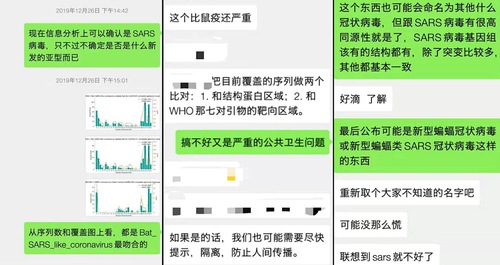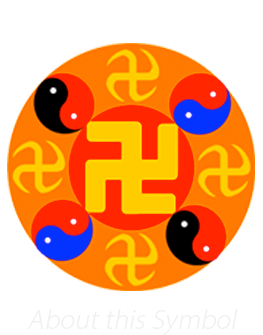(Minghui.org) The coronavirus broke out in Wuhan City, China in late 2019. Within several months, this regional epidemic evolved into a global pandemic.
As people in over 200 countries and regions are combating the disease and searching for a cure, we would like to present a holistic view of what we can learn from the pandemic: about our society, modern science and culture, as well as history.
It is our hope that this four-part series will help our readers understand that the pandemic would not have happened without continued misleading information from the Chinese Communist Party (Part 1). We also examine theories of where the coronavirus started (Part 2) and how it started (Part 3).
Understanding the pandemic in the context of culture and history (Part 4), on the other hand, offers clues for how to reevaluate our principles and moral obligations while preparing for the next chapter in history.
Below is an outline of the series:
Part 1: Timeline and Analysis
Chapter 1: Cover-up of the Outbreak in ChinaChapter 2: Will Such Tragedies Happen Again?
Part 2: A Mysterious Virus — Where Did It Start?
Chapter 3: US-origin TheoryChapter 4: China-origin Theory
Part 3: A Mysterious Virus — How Did It Start?
Chapter 5: Man-made TheoryChapter 6: Natural-origin Theory
Part 4: Rethinking Modern Science and Returning to Traditional Values
Chapter 7: The CCP Poses An Unprecedented Challenge to Humanity
Chapter 8: Reflections on Ancient Wisdom
* * *
Part 1: Timeline and Analysis
“Epidemic diseases are not random events that afflict societies capriciously and without warning,” wrote Frank Snowden, Professor Emeritus of History and the History of Medicine at Yale University in his book Epidemics and Society: From the Black Death to the Present, published in October 2019, several weeks prior to the coronavirus outbreak in Wuhan, China.
“Epidemics are a category of disease that seem to hold up the mirror to human beings as to who we really are,” he elaborated in an interview with The New Yorker on March 3, 2020.
In this part of the series, we will first review how the Chinese Communist Party (CCP) misinformed the public over the coronavirus outbreak. From this perspective, we can gain a better understanding of what went wrong and how to correct it.
Chapter 1: Cover-up of the Outbreak in China
The following timeline shows how the CCP mishandled the coronavirus outbreak.
On December 1, 2019, the first confirmed Wuhan coronavirus patient was treated. This person had no exposure to the Huanan Seafood Market, and he went on to infect 14 healthcare professionals who treated and cared for him.
On December 18, 2019, a 65-year-old shipping staff employee was admitted to Wuhan Central Hospital. The symptoms indicated pneumonia, but no pathogen was identified and no medication worked. On December 24, alveolar lavage fluid from this patient was sent to Vision Medicals in Guangzhou, Guangdong Province, for diagnosis.
On December 26, 2019, data review of the 65-year-old patient's metagenomic next-generation sequencing (mNGS) from automated data analysis result indicated a SARS-like coronavirus. The gene sequence was 81% identical to that of the SARS virus of 2003.
 Internal communication on testing results on December 26, 2019, states that the best match for the genetic information of the new virus was a SARS-like coronavirus.
Internal communication on testing results on December 26, 2019, states that the best match for the genetic information of the new virus was a SARS-like coronavirus.
On December 27, 2019, Vision Medicals shared the gene sequence of the 65-year-old shipping staff employee with the Institute of Pathogen Biology at the Chinese Academy of Medical Sciences. Wuhan Central Hospital was also notified of a new type of coronavirus and quarantine was recommended.
Between December 26 and 27, Zhang Jixian, Director of the Respiration Department at Hubei Hospital of Integrated Traditional Chinese and Western Medicine, examined a married couple presenting with an unusual pneumonia. Both of them, as well as their son, showed specific patterns in their lung imaging. That same day, a vendor at the Huanan Seafood Market presented with the same symptoms. On December 27, this was reported to hospital officials and then to the Wuhan Center for Disease Control and Prevention (CDC). Medical staff was instructed to wear masks, and medical isolation gowns were ordered.
Between December 28 and 29, 2019, three more patients with connections to the Huanan Seafood Market were hospitalized. Hubei Hospital of Integrated Traditional Chinese and Western Medicine once again reported this to higher officials. The China Health Commission then sent officials to Wuhan to launch an investigation.
On December 30, CapitalBio MedLab in Beijing provided mNGS results of another pneumonia patient and concluded that it was a SARS coronavirus. Ai Fen, Director of the Emergency Department at Wuhan Central Hospital, circled “SARS coronavirus” in the report and shared this with her colleague, a medical doctor, who then posted it on the social media groups WeChat.
Note: According to U.S. National Center for Biotechnology Information, bat SARS coronavirus is categorized under SARS. The International Committee on Taxonomy of Viruses named it as SARS-Cov-2. Since the CCP claimed it had defeated SARS in 2003, it was suggested to change the name to 2019-nCov.
On December 30, the Wuhan Health Commission issued an urgent notice concerning the unknown pneumonia. The notice referenced multiple cases of unknown pneumonia that were related to the Huanan Seafood Market and warned medical facilities and individuals to not disclose related information without authorization.
At about 6 p.m. on December 30, Li Wenliang from Wuhan Central Hospital shared in a WeChat group that 7 SARS cases had been confirmed and he reminded his classmate doctors to be on alert. Liu Wen from the Wuhan Red Cross Hospital also posted a similar message on Wechat close to 8 p.m. about a case from Wuhan Central Hospital and warned medical staff to pay attention to safety. Xie Linka from Wuhan Union Hospital posted a note around 9 p.m. mentioning a SARS-like pneumonia related to the Huanan Seafood Market. She said that many such patients had been admitted to her hospital and reminded healthcare workers to wear masks.
At 1:30 a.m. on December 31, 2019, Li Wenliang was summoned by the Wuhan Health Commission for investigation. Throughout the day, he was called numerous times to the Regulations Office of the hospital and reprimanded. Similarly, Liu Wen was investigated by his hospital, while Xie Linka was interrogated by police over the phone.
Also on December 31, 2019, the Wuhan Health Commission issued another notice about pneumonia cases related to the Huanan Seafood Market. This time, the notice said that medical experts had concluded that it was a viral pneumonia but that no human-to-human transmission was observed and no healthcare workers had been infected.
On January 1, 2020, the Wuhan Police Department announced, “Because of spreading rumors related to the Wuhan pneumonia, 8 people have been summoned and investigated by the police.” The police, though, didn't say whether the eight people included Ai Fen, Li Wenliang, Liu Wen, and Xie Linka.
On January 2, Ai Fen, the doctor who provided information about the coronavirus, was reprimanded by hospital officials so harshly that she almost collapsed. Liu Wen was summoned by the police for interrogation.
Starting from January 3, China began to inform surrounding countries of the disease but downplayed its severity. CCP officials claimed at a later time that the U.S. government had received 30 updates in January alone.
On January 5, Zhang Yongzhen from Fudan University and the Shanghai Public Health Center detected a SARS-like virus in samples from the Wuhan Center for Disease Control and Prevention and obtained the virus' entire genome sequence. In a report to Shanghai and national officials, Zhang said that the new virus had the same origin as the SARS virus and it spread through the respiratory system. He also called for the public to take precautionary measures.
On January 6, China CDC started a second level emergency response internally. On the same day, Wuhan City started the National People's Congress (NPC) and the National Committee of the Chinese People's Political Consultative Conference (CPPCC).
On January 7, Li Wenliang examined a patient with glaucoma. The following day, the patient had a fever and was later diagnosed with the coronavirus infection. On January 10, Li began to cough, followed by a fever the next day, and hospitalization on January 12.
After Zhang Yongzhen and his team reported the emergency of the SARS epidemic, he did not receive a response. He thus uploaded the new genome sequence online on January 10 and shared it with others. This made the healthcare industry aware of the virus and medical experts urged top CCP officials to publicize the information about the epidemic. In response, the Shanghai Health Commission shut down the Shanghai Public Health Center, where Zhang works, on January 12 for an investigation, without giving any explanation. Zhang submitted four proposals subsequently, requesting to reopen the BSL-3 lab. But the request was not approved until January 24 when the epidemic was out of control.
On January 11, a notice from the Wuhan Health Commission announced 41 coronavirus cases, two recoveries, seven severe cases, and one death. It maintained that no human-to-human transmission had been observed. The Commission claimed that the disease was “preventable and controllable.”
On January 17, the Wuhan Health Commission reported that 17 new cases had been detected with testing kits, bringing the cumulative total to 62 cases. The Commission did not rule out the possibility of human-to human transmission, but claimed that such contagion risk was low. By then, insiders had heard from top officials in Wuhan that the city was to be put on lockdown. Some residents began to prepare to flee.
On January 18, the Baibuting Community held its 20th annual 10,000-Family Feast as scheduled, and around 40,000 people attended. This community would soon become one of the hardest-hit areas in the epidemic.
On January 20, pulmonologist Zhong Nanshan announced through the state-owned China Central Television that the new coronavirus could spread between humans.
On January 23, Wuhan was locked down. By then, 5 million people had fled the city, carrying the disease all over China. Had there been no coronavirus, the number of people leaving Wuhan during the Chinese New Year holiday was estimated to be around 2 million based on historical data. In other words, an additional 3 million left the city purely because of the outbreak, which exacerbated the spread of the virus.
Starting from January 24, China cranked up its propaganda machine to downplay the disease by saying that the flu infections in the U.S. had reached 13 million with 6,600 deaths since September 2019. What the propaganda did not say was that the seasonal flu usually claims 88,000 lives in China each yeari.
The death of Li Wenliang was announced in the early morning of February 7. Within several hours, the news about his death had hundreds of millions of viewers on social media with about one million comments. Posts on freedom of speech also reached millions of viewers, but they were quickly deleted by the CCP’s massive censorship apparatus and internet monitoring army.
Chapter 2: Will Such Tragedies Happen Again?
Miscommunication by the CCP continued after the outbreak, from suppressing the number of confirmed cases to blaming others, such as the United States, for starting the virus, to bragging about China’s “success” in defeating the disease.
The above timeline indicates that while medical experts had repeatedly sounded the alarm in the early stages of the outbreak, the CCP had been repeatedly downplaying the risk. This happened not because the CCP didn't have the capacity to disseminate information but because it put “political stability” above people's lives.
Cases Were Identified and Reported by Doctors
In the initial stages of the outbreak, doctors obtained a sufficient amount of information, such as the mNGS results from Vision Medicals on December 26 and the data from CapitalBio MedLab on December 30.
In addition, these doctors, as well as testing facilities, reported the findings to their higher-ups. This included communication between Vision Medicals and the Chinese Academy of Medical Sciences on December 27, and between Zhang Jixian and the Wuhan CDC on December 27 and over the following days.
Furthermore, Zhang Yongzhen from Fudan University and the Shanghai Public Health Center detected SARS-like virus in samples from the Wuhan CDC and obtained the entire genome sequence as of January 5. He reported this to Shanghai and national officials, indicating that the new virus had the same origin as the SARS virus. Since it spreads through the respiratory system, he urged the public to be on the alert.
Therefore, there were sufficient technologies, staff, and communications to prevent the disease from spreading, if action had been taken in time.
Role of Health Commission
China's National Health Commission, which has branches at every government level, sent officials to investigate the situation in Wuhan on December 29. At that time, multiple hospitals were reporting coronavirus patients.
On December 30, the Health Commission sent a notice to healthcare workers warning them of an unknown pneumonia, without mentioning the coronavirus. Furthermore, it prohibited medical staff from discussing the information.
After Li Wenliang and others shared the information through WeChat—the only possible way ordinary citizens could do so in this case, all of them were reprimanded by officials and even the police.
While the outbreak was never broadcast on national media at the time, the state-owned Xinhua News Agency quickly published a report about the 8 individuals being punished for spreading rumors.
It was apparent that the CCP had the capacity for quick dissemination of information, but it was selective in what it chose to broadcast. Even when medical experts had repeatedly warned of human-to-human transmission, the Health Commission still claimed that the disease was “preventable and controllable.” It didn't acknowledge human-to-human transmission until January 20, three days before Wuhan was locked down.
One cannot just blame the Health Commission for blocking information about the outbreak, though, as the agency was merely reporting what the CCP wanted people to know. The control of the narratives about the epidemic is just a manifestation of the nature of the CCP, which thrives on violence, deceit, and lies to maintain power.
Fault Starts at the Top
The State Council Information Office in China released a white paper titled “Development of China’s Public Health as an Essential Element of Human Rights” on September 29, 2017. The white paper stated, “China set up the world’s largest online direct reporting system of notifiable epidemics and public health emergencies in 2015, and the average reporting time has been shortened to four hours from five days before the introduction of the system.”
This system was further tested in July 2019 with over 8,200 participants from 31 provinces and provincial-level cities. The purpose was to practice how to handle a virus outbreak some time in 2020.
In addition, another emergency rescue drill took place at Tianhe Airport in Wuhan on September 18, 2019, before the 2019 Military World Games. The agenda included an epidemic survey, staff monitoring, temporary quarantine area, patient transfer, and deep cleaning.
But all these preparations fell apart three months later when coronavirus patients were detected and reported to higher officials, who downplayed the risk in order to maintain “social stability.” Chinese leader Xi Jinping was rarely seen during the epidemic crisis, even though he usually made high-profile appearances on a regular basis.
On the day that Wuhan was locked down, January 23, 2020, Xi gave a speech marking the Lunar Chinese New Year, but he didn't mention the coronavirus. He attended a banquet celebrating the new year the next day, but again said nothing about the outbreak. On January 28, he met with the World Health Organization’s (WHO) director Tedros Adhanom Ghebreyesus. On February 5, he met with Cambodian prime minister Hun Sen.
Xi wasn't seen in public again until February 10, when he visited Beijing's Chaoyang district to inspect the local officials' work in fighting the virus. The next time Xi was seen was on March 10, when he visited Wuhan for the first time since the epidemic broke out in December 2019.
Xi's inaction led to further mishandling of the crisis. A recent document received by Minghui.org reveals that China’s National Health Commission had issued orders to destroy coronavirus samples and prohibited related discussions during the coronavirus crisis.
Furthermore, raw, authentic data has also been deleted to comply with officially published statistics, according to a report issued by the Chaoyang City Health Commission to the Liaoning Health Commission on February 23, 2020. Several government agencies were involved in the data destruction, in which “Besides destroying data, officials also identified all individuals who had access to the data one by one, and required them to sign non-disclosure agreements.”
With such a comprehensive system in place to block information, cover up facts, and mislead the public, it is unlikely that any vital information would be available to the public in the event that another contagion breaks out.
(To be continued)
Related Article in Chinese:
All content published on this website is copyrighted by Minghui.org. Minghui will produce compilations of its online content regularly and on special occasions.
Category: COVID Pandemic









